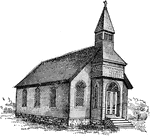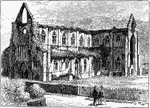
Tintern Abbey, Cisternian
Tintern Abbey was founded by Walter de Clare, Lord of Chepstow, on May 9, 1131. Situated on the River…
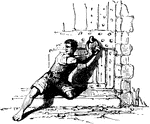
Fugitive Claiming Sanctuary
Sanctuary was also a right to be safe from arrest in the sanctuary of a church or temple, recognized…

Norman Door, Canterbury Cathedral
After the Norman conquest in 1066, Lanfranc (1070-1077) became the first Norman archbishop. He thoroughly…
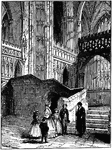
Transept of the Martyrdom at Canterbury Cathedral
The transept is the area set crosswise to the nave in a cruciform ("cross-shaped") building in Romanesque…
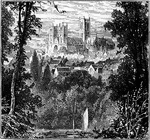
Lincoln Cathedral
It was the tallest building in the world for over 200 years (1300-1549), but the central spire collapsed…
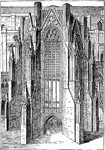
Chapter House of Old St. Paul's
Old St. Paul's is a name used to refer to the Gothic cathedral in the City of London built between 1087…
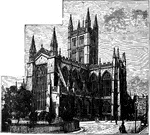
Bath Abbey (Cathedral) Church
The Abbey Church of Saint Peter, Bath, commonly known as Bath Abbey, is an Anglican parish church and…
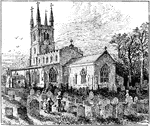
Lutterworth Church
In the 14th century religious reformer Canon John Wyclif was Rector in Lutterworth's Parish Church of…

John Wycliffe
John Wycliffe (mid-1320s – 31 December 1384) was an English theologian, translator and reformist.…
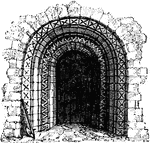
Norman Doorway
The term Norman architecture is used to categorise styles of Romanesque architecture developed by the…
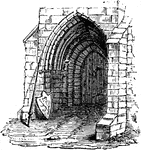
Early English Door
The most significant and characteristic development of the Early English period was the pointed arch…
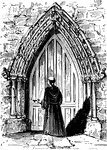
Decorated Doorway
The most significant and characteristic development of the Early English period was the pointed arch…
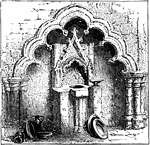
Decorated Arch and Piscina
A piscina or sacrarium is a shallow basin placed near the altar of a church, used for washing the communion…
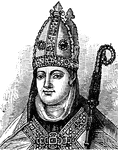
William of Wykeham
William of Wykeham (1320 – 27 September 1404) was Bishop of Winchester, Chancellor of England, founder…

Holy Cross Church, Near Winchester
The Hospital of St. Cross is a medieval almshouse in Winchester, England, founded between 1133 and 1136…
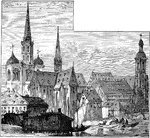
Constance Cathedral
The Cathedral of Constance (Konstanzer Münster in German) served as the central church of the diocese…
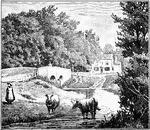
Bridge over the Swift, Lutterworth
The town was granted its Market Charter in 1214 by King John and continues to hold a market to this…
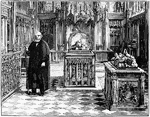
Beauchamp Chantry, St. Mary's, Warwick
The church foundations date back nearly nine hundred years, being created by Roger de Beaumont, 2nd…

King's College Chapel, Cambridge
Henry VI planned a university counterpart to Eton College, the chapel being the only portion that was…
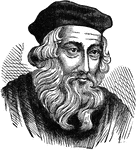
John Wycliffe
John Wycliffe (mid-1320s – 31 December 1384) was an English theologian, translator and reformist.…
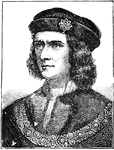
Richard III of England
Richard III (2 October 1452 – 22 August 1485) was King of England from 1483 until his death. He…
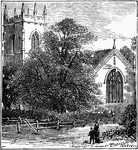
Battlefield Church, Shrewsbury
It was roughly here that the Battle of Shrewsbury of 1403 took place. A church, commonly known as "Battlefield…
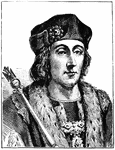
Henry VII of England
Henry VII (January 28, 1457 – April 21, 1509), King of England, Lord of Ireland (August 22, 1485…

St. Paul's Cathedral, London (Interior)
St Paul's Cathedral, is the Anglican cathedral on Ludgate Hill, in the City of London, and the seat…

Archbishop Warham
William Warham (c. 1450 – August 22, 1532), Archbishop of Canterbury, belonged to a Hampshire…
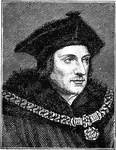
Sir Thomas More
Sir Thomas More (7 February 1478 – 6 July 1535), from 1935 Saint Thomas More, was an English lawyer,…
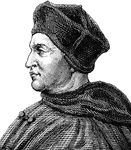
Thomas Cardinal Wolsey
Thomas Cardinal Wolsey (c.1470~1471 – November 28 or November 29, 1530), who was born in Ipswich,…
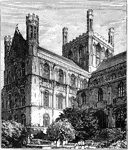
Peterborough Cathedral
Founded in the Saxon period, the architecture is mainly Norman following a rebuilding in the 12th century.…
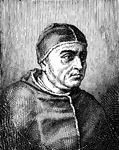
Pope Leo X
Pope Leo X, born Giovanni de' Medici (December 11, 1475 – December 1, 1521) was Pope from 1513…

Pope Julius II
Pope Julius II (5 December 1443 – 21 February 1513), born Giuliano della Rovere, was Pope from…

Sir Thomas More's House, Chelsea
Sir Thomas More (7 February 1478 – 6 July 1535), from 1935 Saint Thomas More, was an English lawyer,…
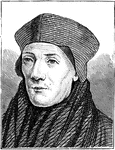
John Cardinal Fisher
John Cardinal Fisher (c.1469 – 22 June 1535), from 1935 Saint John Fisher, was an English Catholic…
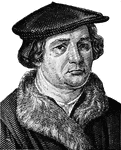
Martin Luther
Martin Luther (November 10, 1483 – February 18, 1546) was a German monk, theologian, university professor,…

Valle Crucis (Cistercian)
Valle Crucis Abbey (Welsh: Abaty Glyn y Groes or Abaty Glyn Egwestl) is in the Dee (Dyfrdwy) valley…
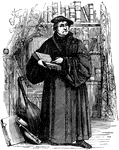
Martin Luther
Martin Luther (November 10, 1483 - February 18, 1546) was a German monk, theologian, university professor,…
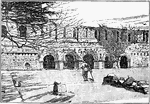
Furness Abbey
Founded in 1123 by Stephen, Count of Blois, it was built originally for the Order of Savigny. Located…

Newstead Abbey
Newstead Abbey, in Nottinghamshire, England, originally an Augustinian priory, is now best known as…
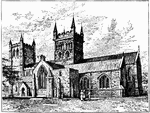
Wimborne Minster
Wimborne Minster, known locally as the Minster, is the parish church of Wimborne, Dorset, England. The…
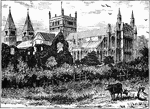
Southwell Minster
The earliest church on the site is believed to have been founded in 627 by Paulinus, the first Archbishop…

Pershore Abbey
Between AD 681 and 689, King æthelred of Mercia gave estates at Pershore to the Bishop of Worcester…
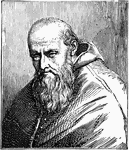
Pope Paul III
Pope Paul III (February 29, 1468 – November 10, 1549), born Alessandro Farnese, was Pope of the…
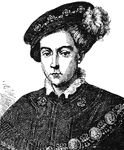
Edward VI of England
Edward VI (12 October 1537 – 6 July 1553) became King of England and Ireland on 28 January 1547…
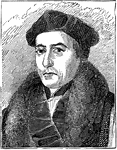
Archbishop Thomas Cranmer
Thomas Cranmer (2 July 1489 – 21 March 1556) was a leader of the English Reformation and Archbishop…
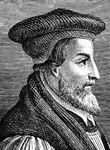
Bishop Hugh Latimer
Hugh Latimer (c. 1485-October 16, 1555) was the bishop of Worcester, and by his death he became a famous…
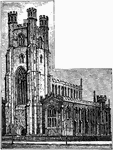
St. Mary's Church, Cambridge
In addition to being a parish church in the Diocese of Ely, it is the University Church for the University…
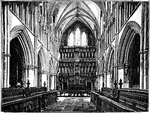
Choir of St. Saviour's, Southwark
It is the mother church of the Anglican Diocese of Southwark. It has been a place of Christian worship…
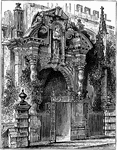
Porch of St. Mary's, Oxford
A church was established on this site, at the centre of the old walled city, in Anglo Saxon times. St…
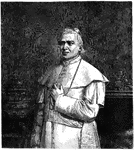
Pope Pius IX
Blessed Pope Pius IX (May 13, 1792 – February 7, 1878), born Giovanni Maria Mastai-Ferretti, was…

St. Peters and the Vatican
An illustration of the exterior of both the Basilica of Saint Peter and the Vatican. The Basilica of…
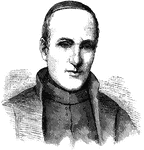
Peter Jan Beckx
Peter Jan Beckx (February 8, 1795, Sichem, Belgium - March 4, 1887, Rome, Italy) was a Belgian Jesuit,…
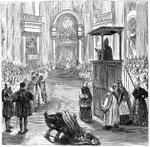
Reading of the Decree, July 18th
An illustration of the reading of the decree in Vatican City on July 18th, 1870.
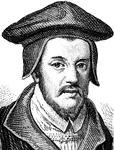
Bishop John Jewel
John Jewel (May 24, 1522 – September 23, 1571), was an English bishop of Salisbury. Under Elizabeth's…
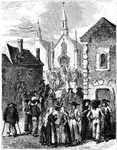
Group Leaving Church
An illustration of a group of people leaving church on a Sunday morning in England.

Pope Sixtus V
Pope Sixtus V (December 13, 1521 – August 27, 1590), born Felice Peretti di Montalto, was Pope…
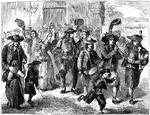
Marriage Celebration
An illustration of a typical marriage celebration in England during the eighteen hundreds.

Archbishop Edmund Grindal
Edmund Grindal (c. 1519 – 6 July 1583) was an English church leader who successively held the…
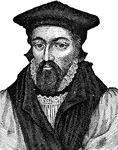
Archbishop John Whitgift
John Whitgift (c. 1530 – February 29, 1604) was Archbishop of Canterbury from 1583 to his death. Noted…
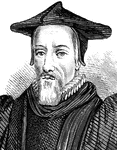
Richard Hooker
Richard Hooker (March 1554 – 3 November 1600) was an Anglican priest and an influential theologian.…

John Knox
John Knox (c. 1510 – 24 November 1572) was a Scottish clergyman and leader of the Protestant Reformation…
